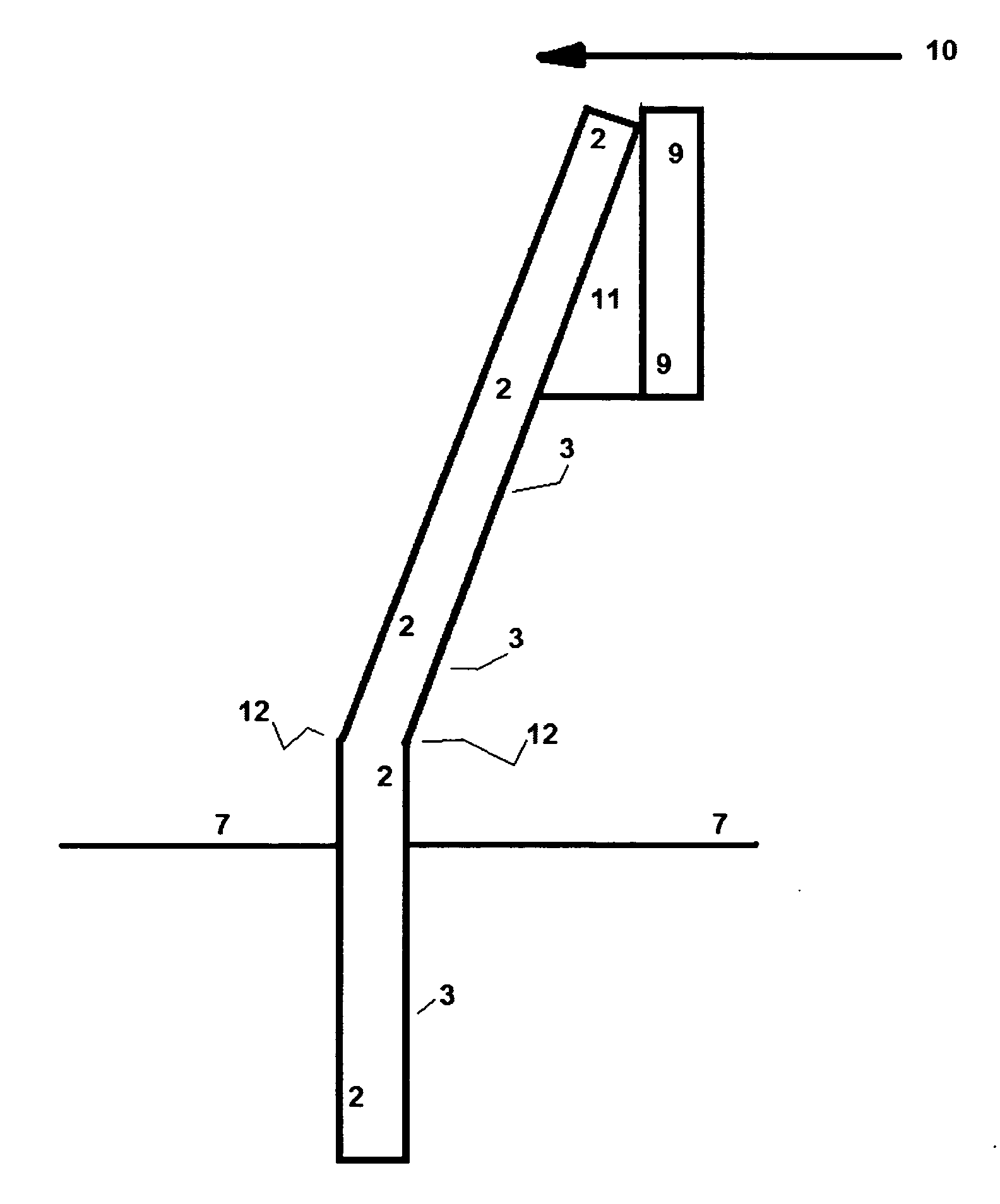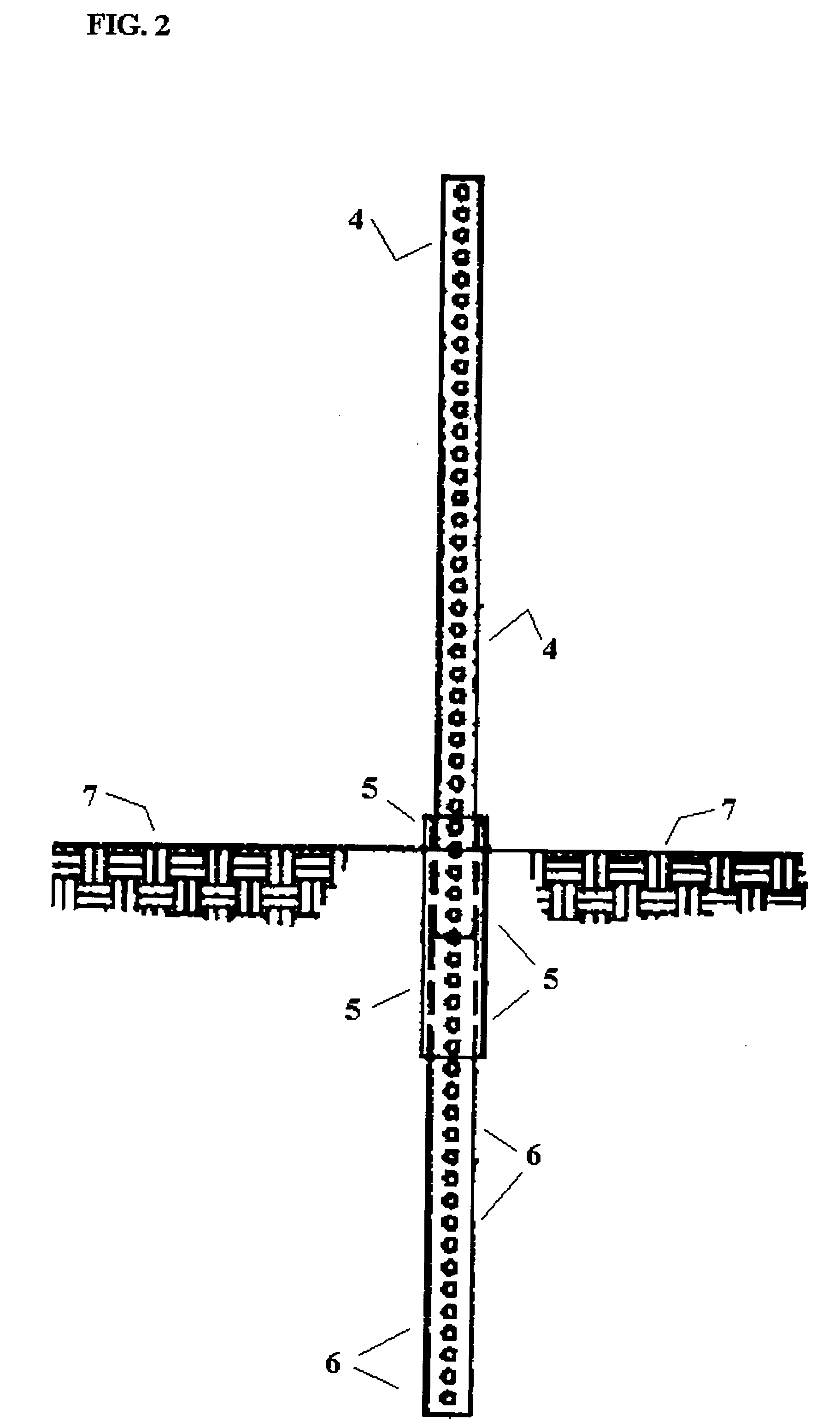Gating Impact Attenuator
a technology of impact attenuator and gating, which is applied in roadway safety arrangements, roadways, construction, etc., can solve the problems of steel usually showing significant deformation, high kinetic energy management requirements, and higher bending moment loads at groundline,
- Summary
- Abstract
- Description
- Claims
- Application Information
AI Technical Summary
Problems solved by technology
Method used
Image
Examples
Embodiment Construction
[0100]The present invention utilizes physical dislocations of structural elements to alter the load path(s) of externally imposed loads by changing the effective cross-section of an element via rotation to the imposed shear (shear diagram being constant) in combination with change in dynamic deflection, of a varying nature based on distance from the imposed load to the intended point(s) of structural failure, of the gross structure, thereby increasing the load-time of the imposed load(s). When steel is the material intended for structural failure, particularly “mild” steel, then the response to the imposed load(s), before the onset of structural failure, can be manipulated due to steel's radical increase in tensile strength when dynamically loaded. That is, steel, as a general statement, exhibits a 2 to 3 times increase in tensile load capacity when dynamically loaded vs its load capacity when statically loaded.
[0101]The present invention utilizes the initial kinetic energy of an im...
PUM
 Login to View More
Login to View More Abstract
Description
Claims
Application Information
 Login to View More
Login to View More - R&D
- Intellectual Property
- Life Sciences
- Materials
- Tech Scout
- Unparalleled Data Quality
- Higher Quality Content
- 60% Fewer Hallucinations
Browse by: Latest US Patents, China's latest patents, Technical Efficacy Thesaurus, Application Domain, Technology Topic, Popular Technical Reports.
© 2025 PatSnap. All rights reserved.Legal|Privacy policy|Modern Slavery Act Transparency Statement|Sitemap|About US| Contact US: help@patsnap.com



